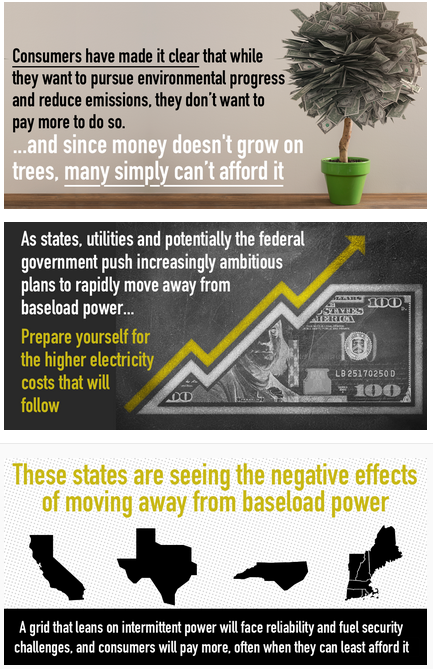Mandating Higher Electricity Rates

September 10, 2020 - It’s no secret that consumers across the country – particularly in the midst of an economic crisis – can’t afford to pay more for electricity. But higher electricity costs are coming as states, utilities and potentially the federal government push increasingly ambitious plans to rapidly move away from baseload power.
Duke Energy’s recently announced Integrated Resource Plan (IRP), developed in response to the North Carolina’s governor’s goal of utilities reducing carbon emissions 70% from 2005 levels by 2030, is the latest example of the rising costs of this rapid pivot towards renewables. Duke’s IRP lays out how it proposes to meet the state’s energy needs for the next 15 years, and offers a range of options so that policymakers can see the challenges and the tradeoffs of moving so rapidly away from the state’s current grid and fuel mix. Should Duke pursue the governor’s goal, which would require retiring well-operating coal capacity early and accelerating the buildout of renewables and supporting infrastructure, the cost to consumers could be an extra $50 or more in monthly rates by 2035.

As Glen Snider, who oversees resource planning for Duke, explained, the added costs largely come from having to transform the grid to accommodate large concentrations of variable power.
"You need a robust grid to be able to move that electricity to where it needs to go. And as you rely more and more on renewable resources, what you'll see in our IRP is you need more and more energy storage. So depending on the level of wind and solar, you have to take into account the need for the associated storage to go with that," said Snider.
Duke’s IRP brings into focus the full system costs of moving so quickly away from the electricity system most states and grids possess. While renewable boosters like to trumpet falling solar panel and wind turbine costs, they leave out the premium consumers have to pay to transform the grid into one capable of juggling the peaks and valleys of variable generation. Massive investments in new transmission and distribution infrastructure, energy storage and a less efficient use of existing resources will all fall on ratepayers’ shoulders.
The steady drip of anecdotes, studies and data that confirm the rising costs of moving away from baseload power has now become a deluge. Whether in California, Texas, North Carolina or New England, the story is increasingly the same: a grid that leans on intermittent power will face reliability and fuel security challenges, and consumers will pay more, often when they can least afford it.
What is particularly troubling is that despite the avalanche of evidence of the challenges posed by the speed of the proposed transition, existing state plans and policies are in fact less ambitious then the Green New Deal offshoots now circulating Washington and the campaign trail. The upfront costs – much less the economy-wide disruption – of abandoning what works for what isn’t are stunning.
Consumers have made it clear that while they want to pursue environmental progress and reduce emissions, they don’t want to pay more to do so. Many simply can’t afford it. Tens of millions of households are already struggling to pay to keep the lights on. Now is not the moment to mandate a less reliable and costly supply of power on millions of families teetering on the brink.

